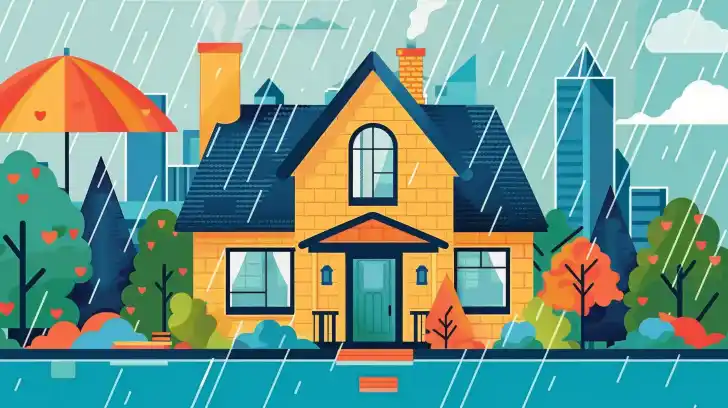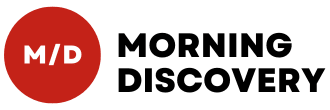Expert Strategies to Slash Home Insurance Costs and Maximize Your Savings
Published on
7 minute read

Homeowners dread seeing their insurance premiums rise year after year. Last year, some policyholders faced premium hikes of 30% or more. This post reveals expert tips to slash costs and maximize savings on your home insurance.
Key Takeaways
- Shop around for home insurance quotes from multiple providers annually to take advantage of competitive pricing and discounts.
- Increase your deductible, bundle home and auto policies, improve home security systems, and maintain good credit to lower your home insurance premium costs.
- Make your home disaster – resistant by upgrading windows, roofing, and installing smoke detectors to qualify for insurance discounts.
- Reevaluate your homeowner’s insurance policy annually to ensure adequate coverage limits, review deductibles, and maximize savings based on life changes like renovations or new valuables.
- Consider purchasing additional coverage options like supplemental policies for high-value items, natural disasters like floods and earthquakes, or umbrella liability policies to protect your assets and cover catastrophic losses.

Understanding Homeowner’s Insurance
Homeowner’s insurance safeguards your biggest asset – your home. It covers damages from events like fires, storms, and theft. This policy protects both the house and your belongings inside.
Most mortgage lenders require homeowner’s insurance.
The coverage amounts vary based on your home’s reconstruction cost, not market value. Policies provide dwelling coverage for repairs or rebuilding. Personal property coverage replaces possessions lost in a covered event.
Liability protection shields you from lawsuits if someone gets injured on your property. Understanding your needs helps determine adequate coverage limits.
Factors Influencing Your Home Insurance Cost
Location affects home insurance premiums significantly. Areas prone to natural disasters like hurricanes, tornadoes, or wildfires face higher risks. Insurers factor in rebuilding costs if your home is damaged.
Your home’s age, size, construction materials, and protective devices impact premiums. Older residences generally cost more to insure. Larger homes require higher coverage limits, increasing premiums.
Fire-resistant materials reduce fire risk, potentially lowering rates. Smoke detectors, burglar alarms, and sprinkler systems qualify for discounts.
Replacement costs for your home’s structure and contents influence premiums. Higher-valued homes command higher rebuild expenses if destroyed. Expensive belongings like jewelry require additional coverage, raising costs.
Your claims history impacts rates – previous claims often trigger surcharges or non-renewals. Good credit scores typically mean lower premiums.

Effective Strategies to Lower Your Home Insurance Premium
Lowering home insurance premiums takes effort but pays off. Explore raising deductibles, bundling policies, improving security, and maintaining good credit. These tactics can make insurance more affordable while keeping you protected.
Shopping around for the best deals
Smart homeowners compare quotes from multiple insurers. They avoid sticking with the same provider year after year. Switching insurers helps secure lower premiums. [insurance companies, homeowners insurance, insurance company].
Research insurance rates annually before renewing policies. Rates change frequently due to various factors. Shopping around lets owners capitalize on competitive pricing. [insurance policy, insurance discounts, insurance agent, shop around].
Raising your deductible
Raising your insurance deductible lowers premiums. Increasing the deductible reduces policyholder costs. Insurers offer diminishing deductible rewards for claim-free years.
Experts recommend raising deductibles by $500 to $1,000. A higher deductible decreases premiums 6% on average. Evaluate potential out-of-pocket expenses before increasing deductibles.
Bundling your home and auto insurance
Homeowners can save substantially on insurance costs by bundling their home and auto policies. Insurance providers offer discounts, often up to 25%, for combining these coverages. However, bundling may not always yield the cheapest option.
Consumers should compare rates from different insurers for separate home and auto policies too.
Combining home and auto insurance simplifies management. Policyholders deal with a single company and pay one bill. This convenience factor incentivizes bundling. Many major insurers like State Farm, Allstate, and Nationwide aggressively market bundled packages leveraging multi-line discounts.
Before bundling, understand coverage needs and compare rates across insurers. Assess if the bundled discount outweighs potential savings from separate policies. Periodically re-evaluate bundling versus unbundling to optimize savings.

Making your home disaster resistant
Home improvements reduce damage risk. Upgrading windows and roofing protects against storms. Installing smoke detectors prevents fire losses. Disaster-resistant homes qualify for insurance discounts.
Reinforcing structures withstands earthquakes and hurricanes.
Proactive measures secure safety. Elevating utilities averts flood damage. Fire-retardant materials minimize destruction. Proper insulation regulates temperatures efficiently. Modernizing homes lowers premiums substantially.
Consult Home Security Systems providers for customized solutions. California Earthquake Authority offers specialized earthquake insurance. National Flood Insurance Program covers flood perils.
Improving your home security
Installing a home security system reduces burglary risk. Insurance companies offer discounts for these devices. They prevent losses and deter criminals. This lowers insurers’ risk, saving you money.
Home upgrades like security systems cut insurance costs. The systems reduce chances of theft or damage. Insurance providers favor lower-risk properties. Secure homes mean fewer claims, so insurers reward that precaution.
Maintaining a good credit record
Maintaining a good credit record is vital. Insurers use credit data to assess risk when pricing policies. A strong credit history signals responsibility, lowering costs.
Good credit reduces home insurance rates. Payment history, debt levels, and credit mix factor into insurance scores. Responsible borrowing demonstrates prudence to carriers.
Evaluating Your Policy Annually
Revisiting your homeowner’s insurance policy yearly is prudent. Insurance needs evolve with life changes like renovations, additions, or new valuables. Reviewing coverage limits, deductibles, and discounts can reveal potential savings.
Comparison shopping from multiple insurers uncovers competitive rates. Policygenius, an online insurance marketplace, simplifies the process of gathering quotes.
Annually reevaluating your insurance shields against overpaying. For instance, increasing your deductible could lower premiums if you have sufficient emergency funds. Conversely, underinsuring risks inadequate payout after a catastrophic event.
Annually reassessing rebuilding costs, personal property value, and liability limits optimizes protection aligned with your current circumstances. Diligently reviewing your policy prevents surprises during claims.
Considering Additional Coverage Options
Most standard homeowner’s policies exclude certain risks. You may need extra coverage for high-value items, natural disasters, or personal liability. Jewelry, art collections, and expensive electronics often require supplemental policies.
Many home policies limit coverage for expensive belongings. Supplemental coverage protects these valuables. Floods and earthquakes typically require separate policies. Homes in high-risk areas should consider these protections.
You might also consider an umbrella liability policy. It boosts coverage limits if you face lawsuits or claims beyond normal liability limits. As your assets grow, umbrella policies offer greater financial security.
Depending on your location and property, additional coverage options exist. Homes near wildfire zones may need fire protection. Those in hurricane-prone areas should explore windstorm endorsements.
Older homes might require special coverage for obsolete materials. Thoroughly review policy exclusions before purchasing extra protection. Discussing your needs with an insurance agent ensures appropriate coverage.
The right additional policies safeguard your possessions and defend against catastrophic losses.
Conclusion
Slashing home insurance costs requires diligence. Research providers thoroughly. Raise deductibles cautiously to trim premiums. Bundle policies to capitalize on discounts. Fortify homes against disasters through upgrades.
Maintain spotless claims histories. Revisit coverage annually to optimize savings. Intelligent strategies yield substantial savings while affording peace of mind.
For more insights on optimizing your financial planning with insurance policies, explore our guide on Final Expense Insurance Demystified.
FAQs
1. How can I reduce my homeowner’s insurance costs?
You can slash homeowner’s insurance costs by increasing your deductible, bundling policies with car insurance, and maintaining a good credit score.
2. What factors affect homeowner’s insurance rates?
Insurance carriers consider factors like your home’s age, location, construction type, claims history, and liability coverage when determining rates.
3. Should I file a claim for small damages?
It’s generally advisable to avoid filing small claims, as frequent insurance claims can lead to higher premiums or policy cancellation.
4. Can I get discounts on homeowner’s insurance?
Many insurance agencies offer discounts for bundling policies, installing security systems, being claim-free, and maintaining good credit.
5. How can I maximize savings on homeowner’s insurance?
To maximize savings, shop around with different insurance agents, consider raising your deductible, and explore group insurance options through employers or associations.
6. What other factors impact homeowner’s insurance costs?
Costs can be influenced by factors like natural disaster risks (flooding, hurricanes), crime rates in your area, and the financial stability of your insurance carrier.
Source Links
- https://www.iii.org/article/12-ways-to-lower-your-homeowners-insurance-costs
- https://www.cnbc.com/2019/10/10/6-ways-to-dramatically-lower-your-home-insurance-costs.html
- https://www.nerdwallet.com/article/insurance/save-on-homeowners-insurance
- https://www.thezebra.com/resources/home/10-unexpected-ways-to-lower-your-homeowners-insurance-rates
- https://www.bankrate.com/insurance/homeowners-insurance/keep-home-insurance-cost-down
- https://fortune.com/recommends/insurance/how-to-lower-homeowners-insurance-premium
- https://www.wsj.com/buyside/personal-finance/how-to-reduce-home-insurance-costs-a3d16f27





